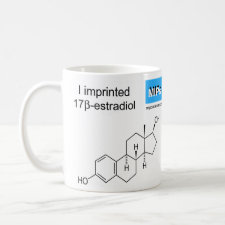
Authors: Chen FF, Wang JY, Lu RC, Chen HR, Xie XY
Article Title: Fast and high-efficiency magnetic surface imprinting based on microwave-accelerated reversible addition fragmentation chain transfer polymerization for the selective extraction of estrogen residues in milk.
Publication date: 2018
Journal: Journal of Chromatography A
Volume: 1562
Page numbers: 19-26.
DOI: 10.1016/j.chroma.2018.05.047
Alternative URL: http://www.sciencedirect.com/science/article/pii/S0021967318306666
Abstract: A novel microwave-accelerated reversible addition fragmentation chain transfer (RAFT) polymerization strategy has been introduced to shorten reaction time and improved polymerization efficiency of the conventional molecularly imprinting technology based on RAFT. Magnetic molecular imprinted polymers (MMIPs) were successfully synthesized much more efficiently using 17β-estradiol (E2) as a template for the determination of estrogen residues. The resultant MMIPs had well-defined thin imprinted film, favoring the fast mass transfer. Moreover, the reaction time, which was just 1/24 of the time taken by conventional heating, was significantly decreased, improving the reaction efficiency and reducing the probability of side reactions. Meanwhile, the obtained polymers have good capacity of 6.67 mg g-1 and satisfactory selectivity to template molecule with the imprinting factor of 5.11. As a result, a method combination of the resultant MMIPs as solid phase extraction sorbents and high-performance liquid chromatography was successfully set up to determinate three estrogen residues in milk samples. For E2, estrone, and estriol, the limit of detections were calculated to be 0.03, 0.08, and 0.06 ng mL-1, respectively, and the limit of quantifications were 0.11, 0.27, and 0.21 ng mL-1, respectively. At the spiked level of 1, 5, and 10 ng mL-1, the recoveries of the three estrogens were ranged from 69.1% to 91.9% and the intra-day relative standard deviation (RSD) was less than 5.7%. In addition, the resultant MMIPs exhibited good reproducibility and reusability with the inter-batch RSD of 5.3% and the intra-batch RSD of 6.2%, respectively. Overall, the realization of this strategy facilitates the preparation of MMIPs with good architecture and high reaction efficiencies for the analysis of complicated real samples
Template and target information: 17β-estradiol, E2, estrogen
Author keywords: Magnetic molecularly imprinted polymers, Microwave-accelerated reversible addition fragmentation chain transfer polymerization, Estrogen residues, Milk sample



Join the Society for Molecular Imprinting

New items RSS feed
Sign-up for e-mail updates:
Choose between receiving an occasional newsletter or more frequent e-mail alerts.
Click here to go to the sign-up page.
Is your name elemental or peptidic? Enter your name and find out by clicking either of the buttons below!
Other products you may like:
 MIPdatabase
MIPdatabase









